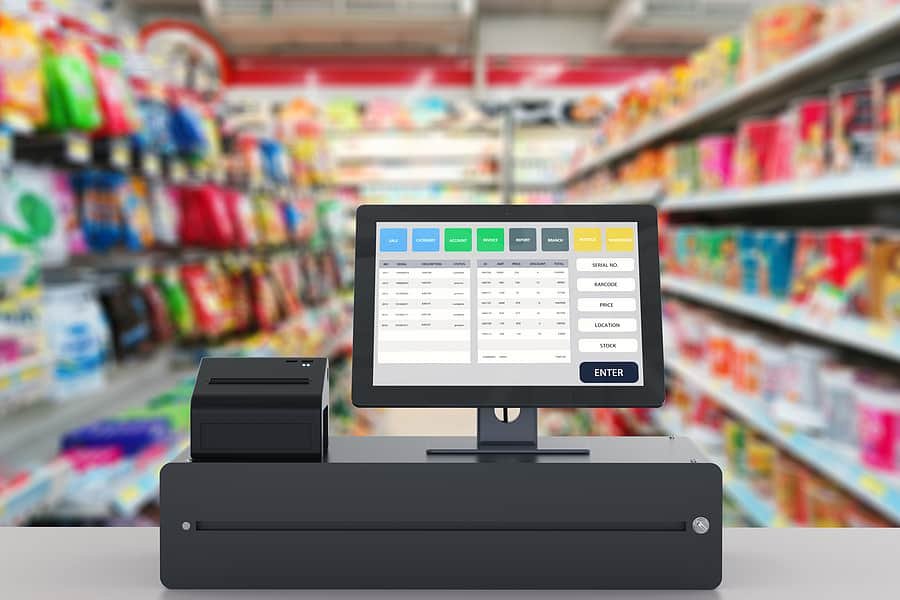THE ROLE OF POS SYSTEMS IN HELPING BUSINESSES MANAGE DISTRIBUTION AND SHIPPING

In today’s fast-paced business environment, the effective management of distribution and shipping is essential to the success of any business. This is where a point of sale (POS) system can be an invaluable tool. A POS system is a combination of hardware and software that allows businesses to manage their sales, inventory, and customer data in one centralized location. In this blog, we’ll explore the role of POS systems in helping businesses manage distribution and shipping, as well as the benefits of using a POS system for this purpose.
What is a POS system?
First, let’s define what a POS system is. A POS system typically consists of three components: a POS machine, which is the hardware that is used to process transactions, a POS software, which is the software that runs on the machine, and an electronic point of sale (EPOS) system, which is the overall system that manages sales, inventory, and customer data. With a POS system, businesses can automate many of their sales and inventory management processes, which can help to improve efficiency and productivity, as well as reduce errors and improve accuracy.
How does a POS system help with distribution?
One of the main ways that a POS machine can help with distribution and shipping management is through inventory management. With a POS system, businesses can automatically track inventory levels and receive real-time updates on stock levels. This allows businesses to easily manage their inventory and ensure that they always have the right products in stock. Additionally, businesses can use their POS machine to manage purchase orders, which can help to ensure that they always have the supplies they need to fulfill orders.
Another way that an EPOS system can help with distribution and shipping management is through order management. With a POS machine, businesses can easily process and fulfil orders, as well as track the status of orders in real-time. This allows businesses to quickly and efficiently fulfill orders and keep their customers were informed about the status of their orders. Additionally, businesses can use their POS machine to create customizable order management workflows, which can help to streamline the order fulfillment process and reduce errors.
Finally, an EPOS system can also help with shipping management. With a POS machine, businesses can integrate with shipping carriers to automatically generate shipping labels and track shipments in real-time. This allows businesses to easily manage the shipping process and ensure that their customers receive their orders on time. Additionally, businesses can use their POS system to offer customizable delivery options and notifications, which can help to improve customer satisfaction.
Benefits of using a POS system for distribution
The benefits of using a POS machine for distribution and shipping management are many.
One of the biggest benefits is improved efficiency and productivity. By automating many of the sales and inventory management processes, businesses can save time and reduce errors. Additionally, by having real-time data on inventory levels and sales, businesses can make better-informed decisions about when to reorder products and how to manage their inventory.
Another benefit of using an EPOS system for distribution and shipping management is increased visibility and transparency. With an EPOS system, businesses can have real-time access to inventory and sales data, as well as shipping and delivery status updates. This allows businesses to better track their performance and make more informed decisions about how to manage their distribution and shipping processes. Additionally, businesses can use the analytics and reporting capabilities of their EPOS system to gain insights into customer behaviour and sales trends.
Finally, using a POS system for distribution and shipping management can also help to enhance customer service and satisfaction. By offering faster order processing and delivery, businesses can improve the overall customer experience. Additionally, by offering customizable delivery options and notifications, businesses can keep their customers informed and engaged throughout the shipping process.
To illustrate the benefits of using a POS system for distribution and shipping management, let’s take a look at a few case studies:
Case Study 1: E-commerce Retailer
An e-commerce retailer was struggling to manage their inventory and fulfill orders in a timely manner. They implemented a POS system with integrated inventory management and order fulfillment capabilities. With the POS system, they were able to automate many of their inventory management processes, receive real-time updates on stock levels, and easily process and fulfill orders.
Additionally, they integrated with shipping carriers to automatically generate shipping labels and track shipments in real-time. As a result, they were able to increase their efficiency and productivity, reduce errors, and improve their overall customer satisfaction.
Case Study 2: Fast Food Chain
A fast food chain was struggling to manage their distribution and shipping processes across multiple locations. They implemented a POS system with customizable order management workflows and integrated shipping capabilities. With the POS system, they were able to easily process and fulfill orders, as well as track the status of orders in real-time.
Additionally, they were able to offer customizable delivery options and notifications, which helped to improve their overall customer satisfaction. As a result, they were able to streamline their distribution and shipping processes, improve their visibility and transparency, and enhance their customer service.
Case Study 3: Online Retailer
An online retailer was struggling to manage their shipping and delivery processes due to a lack of visibility and transparency. They implemented a POS system with integrated shipping and delivery capabilities. With the POS system, they were able to integrate with multiple shipping carriers, automatically generate shipping labels, and track shipments in real-time.
Additionally, they were able to offer customizable delivery options and notifications, which helped to improve their overall customer satisfaction. As a result, they were able to enhance their shipping and delivery processes, improve their visibility and transparency, and increase their customer satisfaction.
Choosing the RIght POS System For Your Business
Now that we’ve explored the benefits of POS system for distribution and shipping management, let’s dive into how to choose the right POS system for your business.
Look for Integrated Shipping and Delivery Capabilities
The first thing to consider when choosing a POS system for distribution and shipping management is whether it offers integrated shipping and delivery capabilities. This means that the POS system should be able to integrate with shipping carriers, automatically generate shipping labels, and track shipments in real-time. This feature can save your business time and money, and help to enhance your customer service.
Check for Customizable Order Management Workflows
Another important feature to consider when choosing a POS system for distribution and shipping management is whether it offers customizable order management workflows. This means that you should be able to create and manage different types of orders, such as pick-up, delivery, and online orders, with different workflows and processes for each. This feature can help to streamline your order fulfillment processes and reduce errors.
Consider Inventory Management Automation
A good POS system for distribution and shipping management should also offer inventory management automation. This means that the system should be able to track inventory levels in real-time, automatically reorder stock when levels get
low, and generate inventory reports. This feature can help to ensure that you always have enough stock on hand to fulfill orders and avoid stockouts.
Look for Analytics and Reporting Capabilities
Lastly, you should consider whether the POS system offers analytics and reporting capabilities. This means that the system should be able to track sales and customer behavior, generate reports on sales trends and inventory levels, and provide insights into your business performance. This feature can help you to make informed decisions about your distribution and shipping strategies and improve your overall business operations.
Conclusion
In conclusion, a POS system can be an invaluable tool for businesses looking to manage their distribution and shipping processes more effectively. With the ability to automate inventory management, process and fulfill orders, and integrate with shipping carriers, businesses can improve their efficiency and productivity, increase their visibility and transparency, and enhance their customer service.
Additionally, with the analytics and reporting capabilities of a POS system, businesses can gain insights into customer behavior and sales trends, which can help to inform their distribution and shipping strategies. If you’re a business owner looking to improve your distribution and shipping processes, consider implementing a POS system with integrated shipping and delivery capabilities.
More Related Trends

Mobile point-of-sale (mPOS) systems are becoming increasingly popular in the UK, as they offer a convenient and flexible way for businesses to accept payments. However, ….

The convenience store industry is a highly competitive one, with margins that are often tight. That’s why it’s so important for convenience store owners to ….

In today’s fast-paced business environment, the effective management of distribution and shipping is essential to the success of any business. This is where a point of ….

The National Convenience Show (NCS) stands as the premier destination to explore, experience, and acquire a diverse range of c-store-specific products and services. Positioned at ….

Managing a retail store comes with challenges, and navigating various tasks can be overwhelming. However, there is a solution to streamline your operations: a retail ….

In the dynamic realm of retail, the pursuit of increased sales is perpetual. Whether you operate a boutique, a flagship store, or a chain outlet, ….
